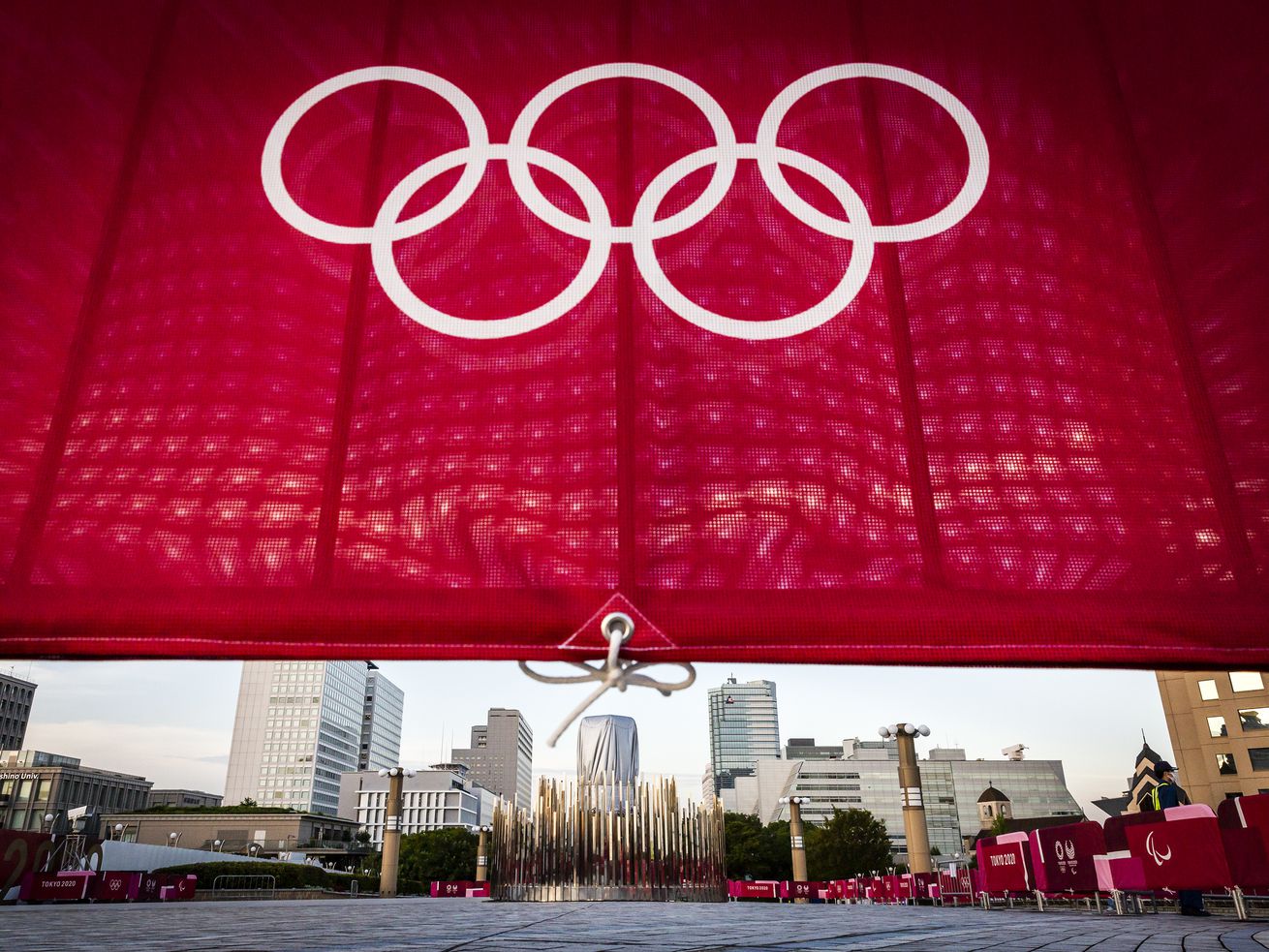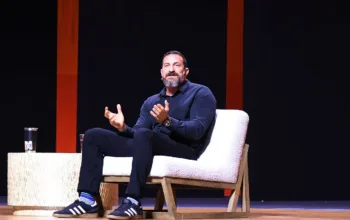Billions of dollars are on the line at the Olympics — but not for athletes.
There is a ton of money to be made at the Olympics, even in a year like this. NBC has paid $7.7 billion for broadcasting rights to show the Olympics through 2032, and it’s already sold $1.25 billion in ads for the Tokyo games. The Associated Press estimates the International Olympic Committee (IOC), which runs the Olympic Games, stands to make $3 billion to $4 billion on television rights for the delayed 2020 Olympics. One NBC executive said they believe this could be the most profitable Games ever.
And yet, much of that wealth won’t be shared with the event’s most valuable assets: the athletes themselves.
Some 11,000 athletes are competing in the 2020 Olympic Games, and 4,000 athletes in the Paralympics (beginning in late August). There are more than 600 athletes just on Team USA’s Olympic and Paralympic roster. (For the purposes of this story, I’m going to focus mainly on American athletes.) The vast majority of those athletes are not rich, or close to it.
You cannot watch TV or exist on the internet right now without running into a Simone Biles ad. The Olympic gold medal gymnast got plenty of well-deserved, high-paying endorsement deals lined up. But she is the exception, not the rule. According to one survey of elite athletes from 48 countries, more than half are financially unstable. And that survey was taken before the pandemic, which made many competitors’ financial situations even worse because so many competitions (that often translate to money) were canceled.
“As impressive as someone like Simone Biles is or Michael Phelps has been, their stories get told and their achievements get reported on and analyzed. But there are incredible stories of people who really have to go work in regular jobs, depending on where they are in the world, to earn money just so they can live, and then they’re doing their training on top of it,” said Lee Igel, a clinical professor at the NYU Tisch Institute for Global Sport.
/cdn.vox-cdn.com/uploads/chorus_asset/file/22731742/GettyImages_1325835765_copy.jpg) Jamie Squire/Getty Images
Jamie Squire/Getty ImagesThe romanticized vision of Olympic athletes is that they’re unpaid amateurs just doing it for the love of sport. Since the 1970s, the international and US rules around amateurism and sponsorships have relaxed to make way for athletes to be compensated for their efforts and achievements. Financial restrictions have been dropped, and professional athletes are allowed to compete in almost all of the Olympic events, save wrestling.
Still, there’s room for improvement. US athletes striving toward the Olympics are generally left to their own devices in terms of funding training and travel for most of their careers, and even once they reach the top tier, they might receive a stipend that, while helpful, is not enough for most to live on. Lucrative sponsorship deals are not abundant. Big brands aren’t falling over themselves to make giant deals in sports such as judo or archery in the same way they might be for swimming or gymnastics, or take a risk on an athlete that might not make the Olympic cut.
“If you’re not a household name, you’re probably not on the top of the endorsement food chain,” said John Grady, a sports law professor at the University of South Carolina.
Moreover, some of the restrictions around athlete sponsorships and endorsements make it harder for lesser-known competitors to capitalize on their Olympic moment in the sun. Under Rule 40, put in place by the IOC in 1991, only official Olympic sponsors and partners — who have presumably spent a lot of money to be in that category — get full-throated rights around Olympic and athlete marketing during the Games. Every other company or brand is subject to a sort of blackout period just before, during, and after the Olympics. While loosened this year, this is still a convoluted system that some experts and athletes say keeps current competitors from being able to strike more deals with non-Olympic partner brands and really cash in.
“It’s a grave disservice and injustice to the athletes that they’re not able to really capitalize when they have the opportunity, every four years, to be on a global stage,” said Sanya Richards-Ross, who won gold in the 400 meters and 4×400 relay in the 2012 Summer Olympics in London and has been very outspoken about athletes’ rights in the past. Even though she was one of the lucky ones who got big endorsement deals, she saw how it affected her teammates.
“The athletes that compete in the Olympics are not amateur, they do it full time. And who else would want to do something full time they’re great at and not get paid?” she continued. After all, she pointed out, everyone else — the IOC, the networks, and even the officials and support staff — is making money. The IOC doesn’t even award prize money for the gold medal.
Olympic glory means being rich or getting a job
Every time the Olympics come around, there is a multitude of stories about athletes in dire financial straits — a rower living close to the poverty line, a speed skater applying for food stamps, dozens of athletes starting GoFundMe drives to try to fund their ambitions. And these are people who have more or less made it in the sport, not to mention those who are still up-and-comers.
“They’re getting slammed up and down to be able to stay in the sport they love,” said John Nubani, a sports agent.
It’s not necessarily a secret that many athletes aren’t rich and that training for an elite sport is expensive. For years, Home Depot ran ads about how many Olympians it employed, drawing attention to the idea that many people had jobs while they were competing. Still, many Americans assume that athletes get more financial support than they do.
Many countries have a ministry of sports that helps to fund their Olympic programs, but that’s not the case in the United States. Instead, it’s run by the United States Olympic & Paralympic Committee (USOPC), a private entity established in 1978 that funds itself through sponsorships and a cut of broadcast rights. Each sport is overseen by a national governing body, like USA Track & Field or USA Wrestling, which fundraise on their own, too.
Dionne Koller, director of the University of Baltimore’s Center for Sport and the Law, noted that there’s something individualistic and, indeed, capitalistic about America’s approach to the Olympics — and intentionally so. The current setup was devised in the midst of the Cold War during the ’70s, when it was determined that the private sector should be in charge of fostering athletes, she explained. At the time, many Soviet countries were already secretly paying their athletes like professionals anyway, and the US was looking for a way to compete. “It’s very consistent with American norms; it’s a very American system. It’s individuals pursuing individual dreams, and in doing so, they certainly wear the uniform of Team USA, but it’s individual, it’s not collective,” she said.
US athletes are still generally much better off financially than many of their counterparts worldwide — there’s a reason the US wins so many medals. But it’s striking that the representatives on the world stage of this incredibly rich country aren’t well compensated. And because of the financial barriers, many athletes with potential likely get screened out.
The USOPC has in place programs to support athletes, such as grants to the national governing bodies and to top performers. National governing bodies often provide stipends to their top athletes, but those can vary from sport to sport (or even be cut). According to USA Today, track and field stipends top out at about $1,000 a month, and for weightlifters, it can range from $750 to $4,000.
For Olympic wrestlers, stipends for the three top-ranked team members across each category are $1,000 a month for the top-ranked athlete, $600 for second, and $300 for third. It’s something, but it’s not a living wage.
“As a general rule in wrestling, most of our athletes that are trying to make the Olympic team are poor. They’re putting off their careers and their moneymaking until after their Olympic dream is met or not,” said Steve Fraser, who is in charge of donor and alumni relations at USA Wrestling.
/cdn.vox-cdn.com/uploads/chorus_asset/file/22731763/GettyImages_1310679835_copy.jpg) Tom Pennington/Getty Images
Tom Pennington/Getty ImagesIt’s almost a given that competitors are going to have to work. Fraser knows what it’s like — he is a former Olympic wrestler and won a gold medal in 1984. He worked as a sheriff’s deputy in Michigan while training. “I did my training before work at 6 am and I did my training after work,” he said. “Luckily, I had a supportive sheriff.”
Even when athletes win at the Olympics, the award money isn’t life-changing. (And again, the IOC doesn’t give out prize money for medals at all.) The USOPC’s “Operation Gold” hands out $37,500 to gold medalists, $22,500 to silver medalists, and $15,000 to bronze in both the Olympics and, this year for the first time, the Paralympics. Bonuses depend on the prize money from the national governing body: USA Wrestling gives $250,000 to gold medalists. USA Track & Field, by comparison, in 2015 agreed to give gold medalists $25,000.
The USOPC says that much of its budget goes toward programs and activities that support athletes, such as training sites, media promotion, and high-performance programs aimed at people who have the best shot at winning.
Olympic organizers and governing bodies say they’ve struggled financially themselves, especially in the pandemic. The Associated Press estimates that the majority of US governing bodies applied for pandemic-related PPP loans — USA Wrestling, for example, got $680,000. And the USOPC said it would need to cut its budget amid the Covid-19 outbreak. Some of this has come with controversy: USA Track & Field came under scrutiny over the size of its CEO’s pay amid layoffs in 2020, and it was reported that the USOPC unsuccessfully lobbied lawmakers for money in a stimulus package from Congress.
Moreover, given all of the money that the Games and Olympic committee and governing bodies take in through sponsorships, donations, and broadcasting rights, it’s hard not to ask whether athletes could and should get a bigger piece of the pie.
The tangled web of Olympic sponsorship rules
Sprinter Christina Clemons earned a ticket to Tokyo when she placed third in the 100-meter hurdles at the US Olympic Trials in June while wearing Cool Ranch Doritos earrings. Days later, Doritos announced that Clemons would be its latest partner, and she thanked the brand for making their relationship official.
During the Olympics, however, it’s likely that Clemons and Doritos will face limits on how much they can talk about each other and in what capacity. Doritos’ parent company is PepsiCo, which is not an official Olympic partner. Its direct competitor, Coca-Cola is. A representative for Doritos didn’t respond to a request for comment.
#Doritos_Partner Just go ahead and call me “Cool
Ranch” Clemons, because its official! Thank you @Doritos for making this happen! pic.twitter.com/Hekn7cQd4h— Clemons, Christina A (@SheTheMann_ing) July 12, 2021
Under the aforementioned Rule 40 out of the IOC, athletes are limited to how their names, images, or performances can be used during the Olympics without the IOC’s permission. The same goes for certain Olympic language and symbols, such as the rings. The rule’s aim is to “preserve the unique nature of the Olympic Games by preventing over-commercialization. (Which might confuse the people who take in all the Olympics-sanctioned advertising.) It’s also to protect Olympic partners from “ambush marketing” by a rival. Many athletes and experts have complained that it keeps athletes from capitalizing on their Olympic success by barring them from seeking out their own sponsors.
The rule has been controversial, especially among athletes at the Summer Olympics. In 2012, London Olympians protested the rule with a #WeDemandChange campaign calling for adjustments. The rule was relaxed slightly heading into the 2016 Olympics in Rio de Janeiro, but in the eyes of many, it wasn’t enough.
“Rule 40 has tried — and I’m using air quotes — to give more opportunities to lesser-known athletes, but that has not quite materialized in any real way,” Gracy, the South Carolina professor, said.
For Tokyo, the rules are relaxed even more, but they’re still quite restrictive. US athletes can post seven thank-you messages referencing their personal sponsors during the Games, and their sponsors can congratulate them one time. But the language they can all use is limited. It has to be generic and can’t use any Olympic or Paralympic intellectual property, meaning no Olympic rings or “Tokyo 2020” or “Team USA.”
/cdn.vox-cdn.com/uploads/chorus_asset/file/22730756/Rule_40_example_1.png) USOPC Tokyo 2020 Rule 40 Guidance
USOPC Tokyo 2020 Rule 40 Guidance/cdn.vox-cdn.com/uploads/chorus_asset/file/22730771/Rule_40_example_2.png) USOPC Tokyo 2020 Rule 40 Guidance
USOPC Tokyo 2020 Rule 40 GuidanceHow effective the rule changes will be for helping lesser-known athletes get more sponsorships during their moment in the spotlight remains to be seen. Brands may not want to take a risk on these athletes, and companies and athletes may be afraid of accidentally breaking the rules. Richards-Ross said she still believes organizers could loosen their grip more. “It’s made to make it too difficult for athletes to be able to profit,” she said.
She was a leader of the #WeDemandChange campaign in 2012 and said, given her experience, some competitors may be afraid to speak out. “I can’t tell you how many emails I got from people telling me that I should be grateful to represent Team USA and if I’m going to be money-hungry to go back to Jamaica,” she said. This type of public sentiment — that the Olympics are for amateurs who should just feel honored to be there — provides cover for the IOC and USOPC in the way they financially treat athletes. “It’s unfair that they’re able to keep that sentiment that it solely is an honor. I don’t think those two things are mutually exclusive. It can be a tremendous honor to represent your country, and you can also be financially rewarded for your efforts.”
US organizers are piloting a new athlete marketing platform meant to better help athletes earn money. But how lucrative it will be is an open question. For example, athletes can opt into a group marketing option and receive $1,250 a year for the USOPC for appearances in marketing campaigns. It’s a decent bonus, not a livable paycheck. “There needs to be a better way for athletes to go out and make money, but this isn’t it,” said Brant Feldman, senior managing partner at American Group Management, which represents Olympic and Paralympic athletes.
Sports are a multibillion-dollar industry. So why don’t we treat athletes like it?
The US is entering the Olympics on the heels of some major developments in college athlete compensation. A Supreme Court decision opened the door to student-athlete payments, and an NCAA rule change allowed athletes to monetize their personal brands and seek out endorsements. These advances have been years in the making, and could potentially put wind in the sails of the conversation around how Olympians are paid. But one big barrier is that the Olympics are intermittent. While the athletes spend day in and day out training, the issue only arises among the public when the competition is actually happening.
I asked experts what they thought could be done to boost athletes financially and fix the system, and the answers ran the gamut.
Feldman, rather unsurprisingly, thinks it would be better if more athletes had agents. But he also suggested they should be able to bargain collectively or even establish some kind of a floor rate for appearing in commercials and advertisements, like SAG-AFTRA has for entertainers. “It would be really great if there were some sort of entity, like a union, that would be negotiating on behalf of all of the athletes for a floor,” he said. “That at least, to me, gives Olympic and Paralympic athletes a better idea of what the minimum should be for any of the content that gets shot across the board.”
/cdn.vox-cdn.com/uploads/chorus_asset/file/22731772/GettyImages_1234084549_copy_2.jpg) Michael Kappeler/Picture Alliance via Getty Images
Michael Kappeler/Picture Alliance via Getty ImagesNubani, an agent who works mainly with track and field athletes, said he believes it comes down to brands or very wealthy people being willing to put more money into USA Track & Field — and that money being distributed to athletes. He also emphasized the need for prize money for medalists. “If you’re not a superstar and you didn’t do something really specifically special at the Olympics … you may not get that big sponsor deal, you may not get the Wheaties box, you may not get the things other superstar athletes will get,” he said.
Koller, who was recently named to the USOPC Commission appointed by the US Senate, suggested there could be a discussion about whether the federal government should, like other countries, do more to support sports, not only for elite athletes but for those on the way there. “When you wear Team USA, you’re giving a public good,” Koller said. Or, at the very least, athletes competing in the same sport should be required to receive the same compensation, which is part of legislation introduced in Congress.
The 2020 Olympics are going to be quite different from Olympics past, including their economics. Brands looking to sell to a local audience are stuck without spectators because of Covid-19; organizers won’t be able to hobnob with sponsors like they would in normal times. One constant: The athletes remain the stars of the show. And it’s important to think about whether they should be paid more like it.
Author: Emily Stewart
Read More



